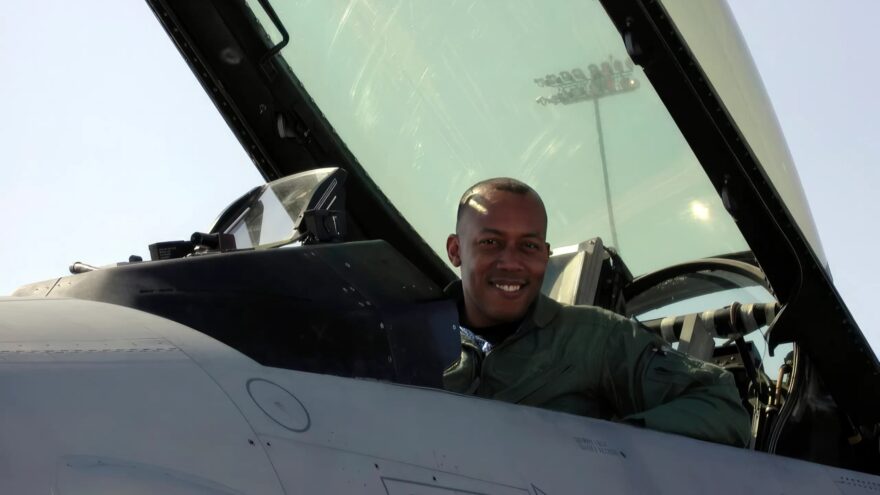Air Force pilots are trained to fly military aircraft and handle complex military weapon systems. They are also trained in military strategies and go through mission planning sessions with teammates. The AF pays special attention to vision, requiring normal color vision and meeting refraction and astigmatism requirements. Those with allergies or asthma may not be able to serve as pilots.
Preparation
Becoming an Air Force pilot isn’t for the faint of heart. You need to have the right attitude, commitment and education to succeed in this demanding career. There’s no turning back once you make your decision to join the military – you are at its whim and will be subject to orders that might take you far away from home.
Enrollment in the Air Force Reserve Officer Training Corps (AFROTC) or at an Air Force academy is the first step. You’ll also need to have at least a bachelor’s degree and meet physical and academic requirements, including a high grade point average. The Air Force prefers a science degree, such as aerospace engineering, physics or computer science.
Once you’ve graduated from college or the Air Force academy and have been commissioned as an officer, you’ll attend Undergraduate Pilot Training (UPT). You’ll be assigned to an operational squadron after completing this phase of your flight training. Your squadron will decide which aircraft to assign you to based on your track selection, performance in UPT, instructors’ recommendations, dream sheet preferences and the needs of the Air Force.
Once you’re a full-fledged Air Force pilot, you’ll complete what is called Mission Qualification Training (MQT). This involves planning a real-world mission, briefing it to a group of senior officers that includes your Wing Commander and flying simulated missions to prove you’re ready to be an operational pilot.

Education and Training in the Air Force
Before you get to the point where you can fly an Air Force fighter, you’ll spend a year or more getting educated in the Air Force. During this time, you’ll be tested physically and mentally to ensure that your body can handle the demands of flying state-of-the-art military aircraft. You’ll also have a number of background checks performed to make sure you are the kind of person that can lead others. In addition to testing your academic skills, the admissions people look at the whole person, which includes participation in athletics, school clubs, community service and other factors that help set applicants apart from one another.
After you track select and graduate from USAFA, you’ll attend Air Force Initial Flight Training (IFT). This process is designed to assess your abilities, both as a pilot and as a leader. It includes 40 days of instruction in a Diamond Aircraft DA-20.
Afterwards, you’ll be sent to your first operational squadron. Depending on the Air Force, this might be an RTU or a FTU, where you’ll be taught to fly the specific aircraft that your squadron will deploy with. Upon completion of this phase, which is sometimes called the B course or the FTU/RTU, you’ll be deemed Combat Mission Ready. During this time, you’ll learn to use all the equipment and weapons in your aircraft.
Once a candidate graduates from college and is accepted into the Air Force, the next step is to get commissioned as an officer and start flight training. The Air Force has a strict process for this, and it’s not for everyone. A person must score at least 31 on the ASVAB (or equivalent with the AFOQT) and pass a physical to be a pilot. Those who plan to be combat systems officers must also score at least 25 on the CSO section of the AFOQT. The medical requirements for pilots are pretty strict, as well. For example, a person cannot have had hay fever, asthma or allergies after the age of 12 and must have 20/20 vision or better.
After a period of time in the vault (where people study weapons, aircraft systems and tactics) and a number of flights in trainers, cadets are upgraded to their first operational aircraft. This can be a T-38C, an F-4 Phantom or a T-1A Aviator. They continue to fly that type for six months to a year until they are ready to be assigned a squadron. This is often called “drop night” or “assignment night.”
At this point, the individual’s performance will determine how quickly he or she gets promoted. It’s not uncommon for a cadet who is very good to be promoted before someone else who didn’t check all of the boxes as much.

Whole-Person Approach to Pilot Selection
The Air Force takes a whole person approach to pilot selection, balancing your GPA and ASVAB scores with other factors such as leadership experience, community service and more. As for physical requirements, you’ll need a minimum seated height of between 5 feet 4 inches and 6 feet 5 inches tall. But the AF also looks at your height specifications in light of the aircraft limitations, noting that it’s not realistic to expect that every potential pilot will fit perfectly into their assigned craft.
After commissioning and attending officer training school, the AF will assign you to your first aircraft based on your class ranking, instructors’ recommendations, your dream sheet preferences and the AF needs at that time. The AF will also take into account any medical issues that you have that might interfere with your ability to fly safely, such as a history of hay fever or asthma after 12 years old and color blindness.
The AF will give you plenty of opportunities to prove that you can fly your aircraft, from qualifying as an instrument rated pilot (IFR) to becoming combat mission ready. The key is that you keep working hard to improve your skills and show a lot of humility when asking for guidance from flight leaders in your squadron. This is how you’ll earn the respect of your peers and become an effective leader.
